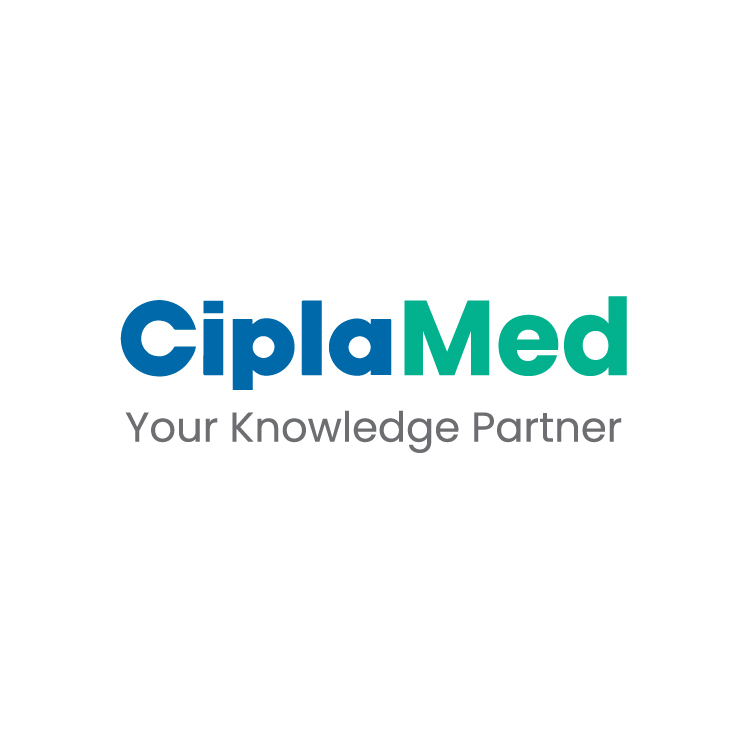EADV 2024: What’s New in Peels in Skin of Colour?
Speaker- Dr Mukta Sachdev
Chemical peels were identified as a mainstay in both clinical dermatological and aesthetic practices, utilized by both clinical and aesthetic dermatologists. The post-pandemic medical environment had shifted perspectives among physicians and patients, resulting in more aggressive approaches with various acid combinations. However, it was noted that company information and experience might not apply universally to all skin types. Hence, there is need for some caution for treating patients with darker skin or skin of colour, highlighting the need for a conservative approach in these cases.
Recent market report published in 2022 indicated that 81 percent of consumers had become more accepting of non-invasive aesthetic treatments compared to five years prior. The global chemical peel market, valued at $ 2172 million, was projected to reach $3,350 million by 2034, underscoring the importance of expertise in the field. The industry had expanded to include spas, salons, and aesthetic clinics offering a variety of cosmetic procedures, including chemical peels. Patients frequently sought expert advice and care from these facilities. Additionally, technological advancements contributed to improved chemical peel formulations and application methods, particularly for darker skin types.
Understanding the characteristics of darker skin revealed several key differences. There was an increased compaction of the stratum corneum, along with heightened melanosome dispersion, but an equal epidermal thickness, and also equal number of corneocytes, and melanocytes. Additionally, the lipid content was elevated, while desquamation rates increased, ceramide levels decreased, and transepidermal water loss was also higher. These structural differences govern the importance of tailored approaches when treating darker skin types.
The terminology surrounding chemical peels had evolved, with professionals preferring the term "chemical rejuvenation" to emphasize their role as cutaneous resurfacing procedures. These treatments facilitated controlled exfoliation of the skin, promoting regeneration and remodelling of both the epidermis and dermis.
A more scientific approach was essential for peel procedures, emphasizing the importance of understanding depth, acid selection, procedure choice, indications, and pre- and post-skin conditioning. Notably, less than 4 percent of individuals with darker skin experienced unwanted side effects, a number that continued to decline, indicating improved treatment methods for this demographic. However, complications still arose from poorly executed cross techniques, particularly with trichloroacetic acid (TCA) peels.
In the context of darker skin, superficial peeling has been deemed preferable. The essential components of the peeling process included the condition of the skin and the appropriate choice of peel. Key steps in the procedure encompassed obtaining consent and taking photographs at each visit. Priming prior to the peel have been emphasized as critical for ensuring uniform penetration of the peeling agent. It contributed to reduced wound healing time, identified any skin intolerance, decreased the risk of side effects, and promoted patient compliance. The recommended protocol involved using certain skincare products two to four weeks before the peel and stopping them three to five days prior to the procedure.
Priming agents utilized for skin preparation included sunscreens, topical retinoids, and alpha hydroxy acids (AHAs) such as glycolic acid. Other agents like hydroquinone, kojic acid, arbutin, licorice, azelaic acid, and salicylic acid were also employed. Home care regimens incorporated glycolic acid washes, as exfoliation enhanced the penetration of peeling agents. A more aggressive approach to preparation was noted to yield better results in the peeling procedure.
Patients with darker skin were identified as being at risk if they had sensitive skin or a history of photosensitivity. Additionally, characteristics such as being unreliable, uncooperative, fussy, obsessive, or having unrealistic expectations were noted among many individuals seeking aesthetic treatments in clinics.
New techniques in chemical peeling, such as sequential, segmental, switch, and punctate methods, introduced a fresh dimension to the practice. Sequential peeling involved applying treatments one after the other, while segmental peeling focused on different anatomical areas during the same session. The switch technique allowed practitioners to move between different peels in subsequent sessions. Punctate peeling targeted specific sites for treatment. The approach emphasized that effective peeling involved not just the procedure itself but also preparation, post-care, peel kits, device usage, and home care, marking a significant shift in the overall thought process.
Specialized peel kits were developed for specific indications, enhancing treatment efficacy. A novel technique known as the "uber peel" combined peels with microneedling in a single session. Studies demonstrated the safety and effectiveness of this combination, particularly with a 60% phenol and croton oil mix for treating atrophic scars. Additionally, a new application emerged for addressing hypopigmentation, specifically idiopathic guttate hypomelanosis (IGH), through spot peels using 88% phenol. In a study involving 20 patients with 139 IGH macules, 64% showed repigmentation after treatment. This indicated that spot peels could serve as a safe and effective option for IGH, commonly observed in darker skin types. Further research also validated the use of 50% TCA for treating IGH, suggesting a shift in thought processes and expanding the indications for chemical peels.
New indications for chemical peels in darker skin included treatments for pigmentation disorders such as lichen planus pigmentosus, amyloidosis, and keratosis pilaris. Patients frequently sought procedures aimed at achieving brighter, more radiant skin, particularly in specific areas like under the eyes, body, axilla, elbows, knees, and intimate regions. Glycolic acid peels, ranging from 20% to 70%, were found to be effective for under-eye treatments, with 20% glycolic acid demonstrating greater efficacy than lactic and ferulic acids. While TCA was also utilized, caution was advised for its use in darker skin types. Specialized under-eye peels were developed, often combined with home-use treatments, to enhance results and address specific concerns.
New areas for chemical peeling included lip rejuvenation, targeting photo damage, lip pigmentation, rough texture, and wrinkles. Preferred treatments for lip peels involved mandelic, lactic, and glycolic acids, offering an anti-aging effect through epidermal rejuvenation, resulting in improved wrinkles and pigmentation compared to fillers. Nail peels emerged as a novel concept for addressing surface abnormalities, roughness, and hyperkeratosis. Glycolic acid at 70% concentration was compared with a combination of phenol and TCA, while other formulations included jasmonic acid and black acetic acid, although further studies were deemed necessary. Additionally, specialized peels were developed for elbows and knees, addressing common darker skin issues. Peels for melasma were routinely used in darker skin types, alongside newer indications for intimate area peels, which catered to pigmentation caused by inflammation, friction, hormonal changes during pregnancy, and genetic factors.
Intimate area peels gained popularity, often packaged as complete kits with masks. A notable advancement included the treatment of pearly penile papules using 30% TCA localized chemical peeling, documented in a case report that highlighted its effectiveness in alleviating psychological distress, with no reported side effects in the two cases studied. Additionally, peels were applied to the anal and perianal areas, reflecting a growing demand for treatments in these intimate regions. However, concerns arose regarding the risks of mucosal absorption, emphasizing the need for caution despite the interest in such procedures.
Body peels presented distinct challenges compared to facial peels, including slower wound healing and an increased risk of complications. Post-peel care proved more difficult, and superficial peels were often less effective. Concerns arose over systemic toxicity and the potential for keloid formation, particularly due to the lower concentration of appendageal structures in non-facial areas, which heightened the risk of systemic absorption. Commonly used peels included glycolic, lactic, and mandelic acids- a sequential application of 70% glycolic acid followed by 40% TCA—being a classic choice for treating actinic keratosis, lentigines, and other skin conditions. Keratosis pilaris, particularly prevalent in darker skin, remained challenging to treat, though glycolic acid demonstrated significant improvements in follicular hyperpigmentation.
Awareness of various skin conditions and their treatments became increasingly important, particularly with the emergence of coloured peels. Patients now ask about peels identified by colours such as red, yellow, green, blue, purple, and pink, as well as terms like "white peel" and "black peel." These innovations represented a new trend in aesthetic treatments. The concept of the "perfect peel" also gained popularity, reflecting the vast amount of information accessible to patients today. This trend posed challenges for practitioners who needed to navigate patient expectations and understand the efficacy and safety of these treatments.
Home-use chemical peeling products gained popularity among patients, providing options for initiating treatment, advanced priming, and maintenance. Dermatologists recognized the importance of integrating these products into treatment regimens, as they could enhance patient confidence and complement in-office peels. Many available products featured serious concentrations, with some containing almost professional-level formulations. These included options like 10% glycolic acid combined with phytic acid and retinol, available over the counter. The range of products expanded significantly, introducing pads and exfoliation systems that complicated the landscape of easily accessible treatments. Clinical studies demonstrated the efficacy of these home-use systems, which posed new challenges for dermatologists as patients began incorporating various treatments, such as steam, scrubs, serums, and light-emitting diode (LED) masks, into their skincare routines.
Peeling male skin presented unique challenges due to its thicker texture and increased pilosebaceous activity, often requiring more sessions or higher strength peels. The future of treatment strategies included innovative combinations, such as integrating LED masks with chemical peels, alongside other modalities like lasers, light therapies, microdermabrasion, derma rollers, and derma pens. Additionally, the incorporation of home-use skincare products into these regimens was anticipated to enhance overall efficacy and patient satisfaction.
In conclusion, chemical peels for skin of colour presented ongoing challenges that necessitated careful consideration in patient selection, priming, peel technique, and post-care treatment. Combining these approaches with home care strategies aimed to achieve safer and more effective results. Understanding the diverse needs of consumers, clients, and patients was essential, as they represented a unique combination of individual characteristics and expectations.
33, European Academy of Dermatology and Venereology Congress, 25-28 September 2024, Amsterdam


